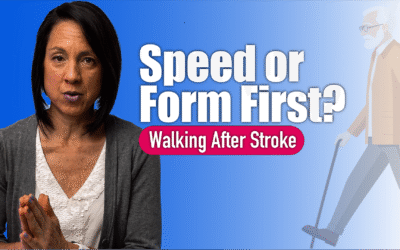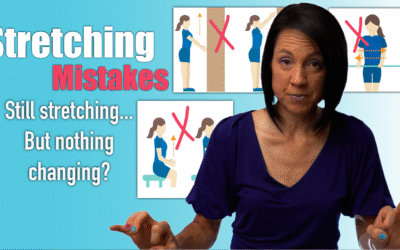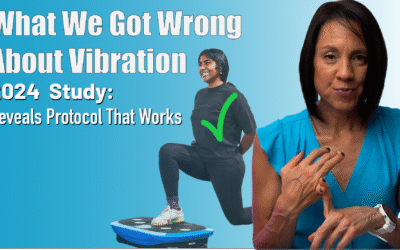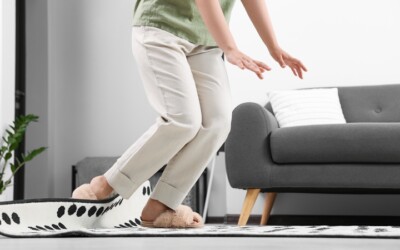About Stroke
Background
A stroke occurs every 40 seconds in the US and is the leading cause of disability. A stroke is when critical blood flow to the brain is interrupted due to damage to the blood vessel (the garden hose that carries the blood to the brain).
What are the two types of stroke?
This can happen in two ways. Either the blood vessel (garden hose) has a blockage (clot) or the blood vessel (garden hose) ruptures.
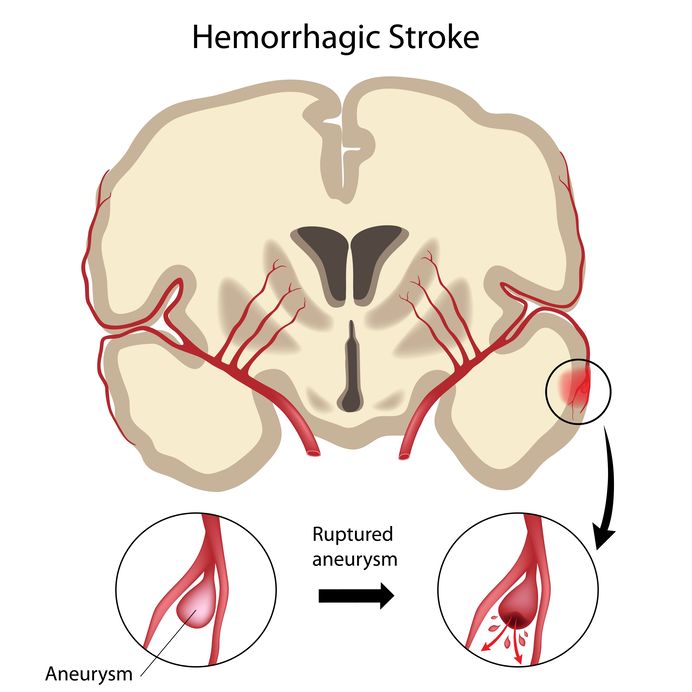
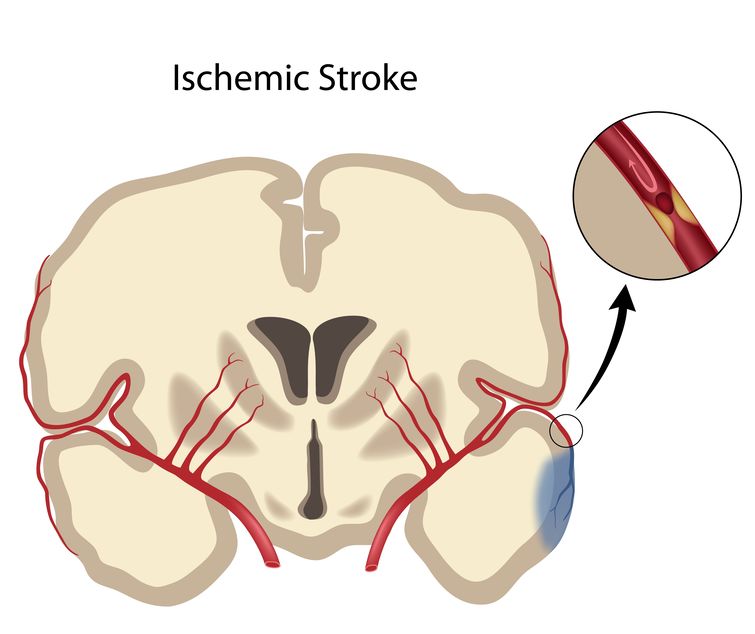
The brain is an amazingly complex and critical organ that controls all of the functions in the body. Blood flow is what keeps the nerves in the brain alive and functioning properly. In other words, blood is the brain’s “food supply”. When blood flow to the brain is stopped (as is the case with a stroke), that “food supply” is cut off. Blood also carries oxygen and therefore the brain becomes deprived of oxygen. This is called hypoxia.
What is excitotoxicity after a stroke?
When cells in the brain become hypoxic, it creates a reaction called excitotoxicity. Excitotoxicity is a process where an overabundance of a neurotransmitter called glutamate leaks out of the neurons. Excessive glutamate leads to excessive calcium infiltrating the cells damaging structures on the inside of the cell. This is very similar to an oil spill. Oil is safe when used in small doses, however, an oil spill causes excessive amounts of oil to flood our oceans. It is this overabundance of oil that ultimately kills wildlife. Glutamate is very similar. It is a necessary neurotransmitter however, too much of it in the brain starts to destroy healthy nerves.
What happens in the first three days after a stroke?
Once you arrive at the hospital, the medical team has to main goals. Remove the clot (if a clot is present) and protect nerves in the brain from further damage.
What are the effects of stroke?
Each area of the brain is responsible for a specific function. Depending on where the stroke occurs
The brain is divided into three main areas
- the cerebrum
- the cerebellum
- the brain stem
Depending on which areas of the brain is damaged by the stroke, will effect the type of disability someone might suffer.
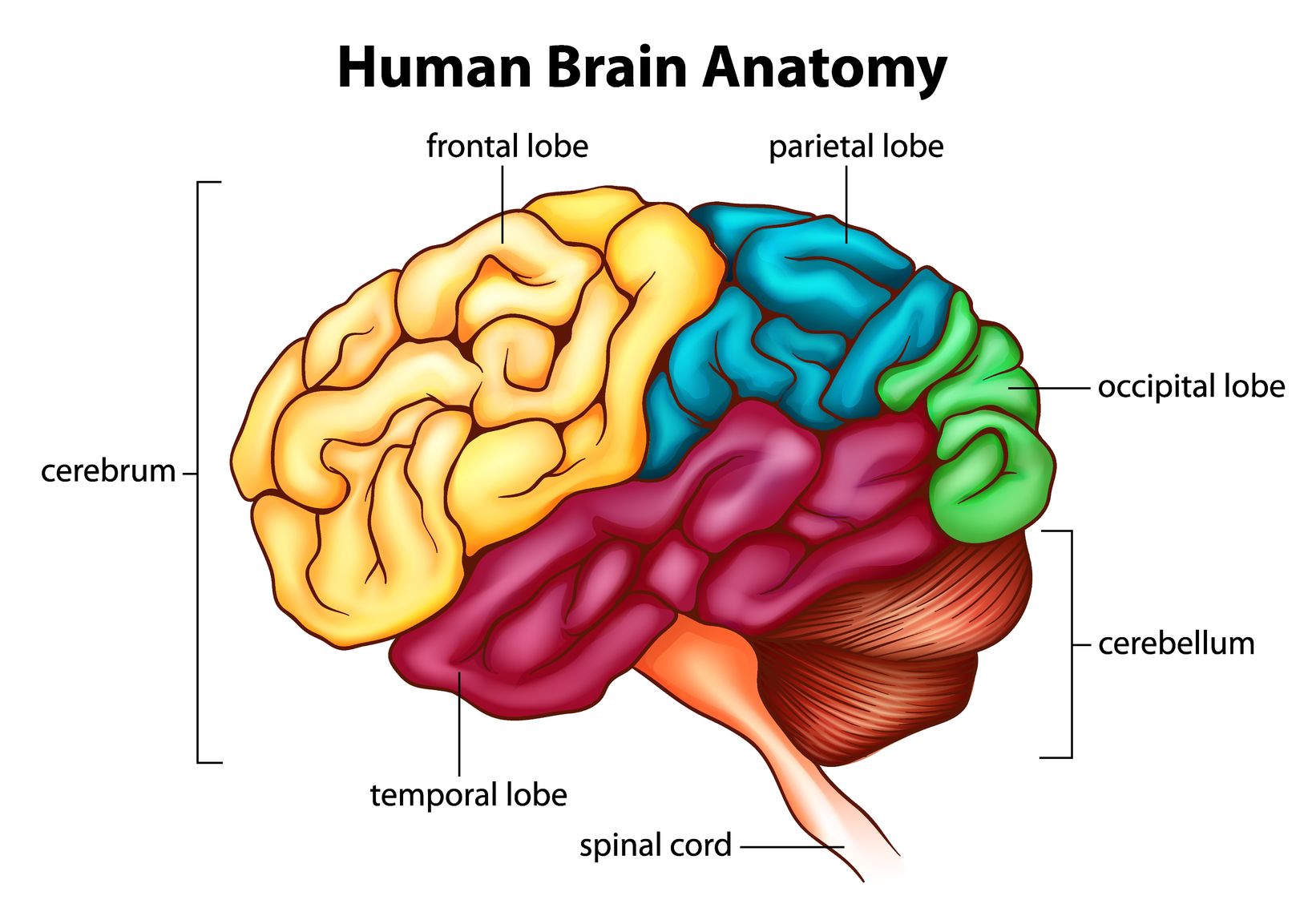
What are the effect of a stroke in the cerebrum?
The cerebrum is located in the front area of the skull and is divided into two hemispheres. The cerebrum control movement, speech, thinking, reasoning, memory, and emotions.
Damage to the cerebrum may result in one or several of the following impairments:
- Movement problems
- Impaired sensation
- Speech and language problems
- Difficulty swallowing
- Cognitive problems (thinking, planning, memory, and reasoning abilities)
- Poor body awareness and proprioception (knowing where the body is in space)
- Bowel and bladder incontinence
- Problems with emotional control
What are the effects of a right side versus a left side stroke in the cerebrum?
As mentioned earlier the cerebrum is divided into a right and left hemisphere. Here are the most common impairments depending on whether a stroke occurs in the right cerebral hemisphere or the left cerebral hemisphere.
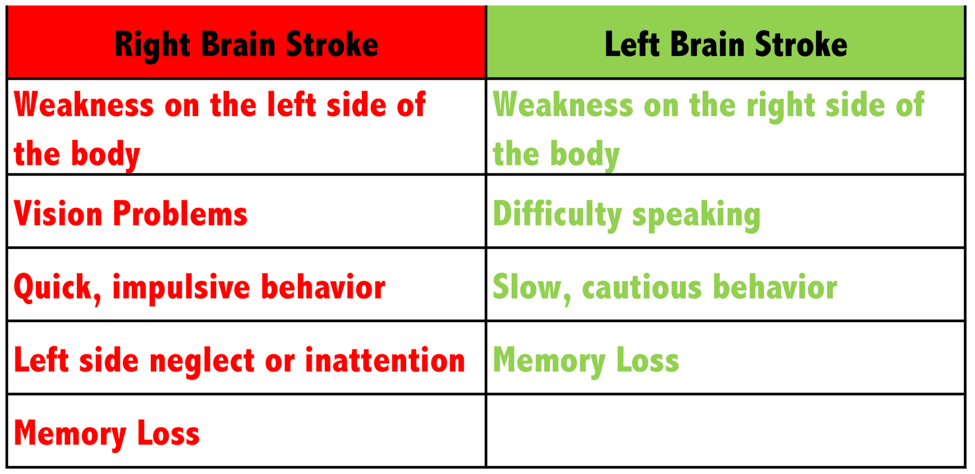
What are the problems associated with a stroke in the cerebellum?
The cerebellum sits in the back of the brain and its job is to coordinate and modulate (fine-tune) movement. It also plays a critical roll in balance. A stroke in this area of the brain is the least common type of stroke. Damage to this part of the brain can cause several impairments:
- dizziness
- headache
- nausea
- vomitting
- double vision
- tremors
- vertigo
- poor coordination
- difficulty swallowing
- difficulty speaking
- uncontrollable eye movement.
What problems can occur with a stroke in the brainstem?
The brainstem is located at the base of the brain and is responsible for vital functions such as breathing and heartbeat. Needless to say, we are dependent on brain stem function for survival. Common problems seen with a brainstem stroke include the following:
- breathing and heart function
- difficulty chewing and swallowing
- temperature regulation
- balance and coordination
- weakness
How long does it take for the brain to heal after a stroke?
Many factors determine how much a person will recover and how long the recovery will take. These factors include a person’s age, co-morbidities at the time of the stroke (other health conditions), initial severity of the stroke impairments, age, type of stroke, and the location and size of the damaged area in the brain. Generally speaking, the majority of motor function gains occur in the first three months. Recovery of visuospatial neglect and orientation follow 5-6 months after stroke, and gains in cognition, memory, and language function may extend months to years after the stroke.
More Articles You May be Interested in:
Is Your Neuro Rehab Helping Your Recovery, or Making Things Worse?
The Real Impact of Neuro Rehab on Recovery https://youtu.be/YDgQc4p_atE Recovering after a stroke often involves long hours of rehabilitation. Neuro rehab programs are designed to retrain the brain and body, helping survivors regain independence. Understanding...
How Short Bursts of Exercise Boost Brain Healing
HIIT for Stroke Recovery Boost brain rewiring, improve movement, and speed recovery with short bursts of exercise. https://youtu.be/4SgXN2uRX8g If you’ve been on your stroke recovery journey for a while, you’ve probably heard the word neuroplasticity. Neuroplasticity...
Stretching Spastic Muscles: 8 Mistakes to Avoid
8 Common Stretching Mistakes in Stroke Recovery Why Your Stretching Might Be Making Spasticity Worse https://youtu.be/bBsM34HROYY If you’re dealing with spasticity after a neurologic injury, stretching might not be as straightforward as it seems. In fact, doing it the...
New Study: Vibration Plates Boost Balance After Stroke
It Just Vibrates… So Why Are Stroke Survivors Getting Better? The Truth Behind the Research https://youtu.be/GZgGsMjEgJQ When vibration plates first became popular, they reminded many of us of those old 1980s machines that promised to "shake" the fat away. Naturally,...
Walking “Tips” that Sabotage Post-Stroke Progress
Recovering from Stroke? Don’t Let These 7 Walking Mistakes Set You Back Better Walking Starts by Avoiding These Mistakes https://youtu.be/_nkjHLdOeLc Recovering your walking ability after a stroke is an incredible accomplishment. You’ve put in the work. Strengthening...
Struggling with Shoulder Pain After a Stroke? Here’s What Works
Why Does My Shoulder Hurt After a Stroke?Understanding the 6 Most Common Causes and What You Can Actually Do About Them Let’s be real — if you’re recovering from a stroke and your shoulder still hurts, it can feel really defeating. Especially if you’ve been doing “all...
Still Feeling Weak After Stroke? This Might Be Why
Doing the exercises… but still not getting stronger?You’re walking. You’re moving. Maybe even getting stronger.But everything still feels hard. Like walking across a room takes full concentration. Or standing up while talking feels like solving rocket science....
Stroke Recovery: Spasticity vs. Adaptive Shortening vs. Contracture
Stroke Recovery: Spasticity vs. Adaptive Shortening vs. Contracture Muscle tightness after stroke is common and can be the greatest barrier to restoring normal arm and leg movement. But not all tightness is the same. To treat it effectively, you need to understand...
Why Eccentric Control Might Be the Missing Link in Your Stroke Recovery
Why Eccentric Control Might Be the Missing Link in Your Stroke Recovery After a stroke, movement rarely returns the way we’d like. Instead of smooth, controlled motion, you get stiffness... or those annoying synergy patterns—where every muscle seems to fire at once....
Why Plyometrics Matter After Stroke (Even if They Sound Scary)
Why Plyometrics Matter After Stroke (Even if They Sound Scary) Let’s start with the obvious: The word "plyometrics" sounds like something reserved for athletes, not stroke survivors.But stay with me—because if you’re in the later stages of recovery, this could be the...

